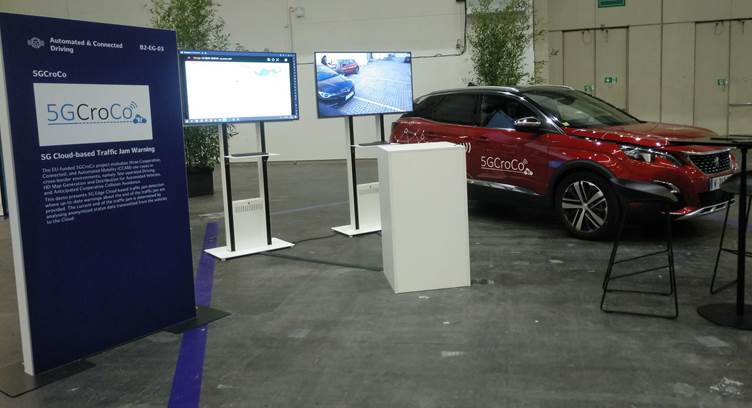The 5GCroCo project demonstrates seamless connected and automated mobility (CAM) services enabled by 5G technologies in France, Germany, and Luxembourg.
5GCroCo (Fifth Generation Cross-Border Control) is a € 17-million European innovation action officially launched on 1st November 2018 with the objective to perform 5G connectivity tests and trials for the road environment in real-life scenarios. On 21st October 2021, 5GCroCo demonstrated three use cases in the corridor areas that connect the cities of Metz-Merzig-Luxembourg in France, Germany, and Luxembourg, traversing three countries, two borders.
The objective of 5GCroCo is to validate key 5G technologies in challenging cross-border, cross-mobile-network-operator, cross-car-original-equipment-manufacturer, and cross-telco-vendor scenarios. The project concentrates in particular on cutting-edge technologies such as 5G New Radio, service continuity, Mobile Edge Computing/Cloud, end-to-end and predictive Quality-of-Service, network slicing, virtualization, network support for precise positioning, and security.
Furthermore, 5GCroCo is exploring innovative business models. It will contribute to the definition of the necessary policy and spectrum regulation to guarantee the success of 5G for connected and automated mobility (CAM) services. The impact of 5GCroCo is also present at the standardization level for both the telecom and the automotive industries (3GPP, ISO, etc.).
5GCroCo is thus contributing to the consolidation of Europe’s leading role in 5G technology, paving the way for the commercial deployment of 5G for CAM in Europe and worldwide. The results obtained so far in the project and through the three use cases show that cross-border/-mobile-network-operator handover works seamlessly and that the use of 5G networks is key to reducing the end-to-end latency, which is critical in CAM applications, such as the ones studied in the 5GCroCo use cases. Moreover, additional results show that, thanks to Mobile Edge Computing / Cloud technology, more stable delays can be achieved than when relying on public internet for the hosting of applications. Furthermore, a significant increase of the transmission speeds has been measured in the 5GCroCo tests and trials.




















